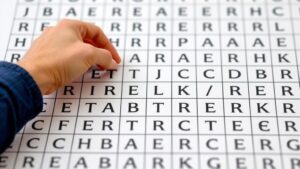Employing Advanced Logical Reasoning to Decode Multi-Layered Treasure Clues
Employing Advanced Logical Reasoning to Decode Multi-Layered Treasure Clues
The art of treasure hunting is not only about physical search but also deeply rooted in the ability to interpret clues that often come in multi-layered formats. Advanced logical reasoning plays a crucial role in unraveling these clues, enabling treasure seekers to traverse through complex puzzles and find hidden fortunes. This article delves into how advanced logical reasoning can be effectively applied to decipher treasure clues while providing relevant examples and real-world applications.
Understanding Multi-Layered Treasure Clues
Multi-layered treasure clues are intricately designed hints that require critical thinking and analytical skills to interpret correctly. e clues can often appear in various forms, including riddles, cryptic messages, or numerical puzzles. For example, a clue might state, Where the sun sets at the peak of three mountains, beneath the red flower, you shall find the path. This statement is layered with multiple components that need to be examined thoroughly, including geographical locations, natural elements, and symbolic interpretations.
The Role of Logical Reasoning
Logical reasoning refers to the process of using structured, disciplined thought to arrive at conclusions based on premises and facts. When applied to treasure clues, logical reasoning entails the following steps:
- Clarification of the Clue: Break down the clue into manageable parts, identifying keywords and significant phrases.
- Analysis of Components: Determine the meaning and relevance of each part. For example, what do the three mountains signify?
- Examination of Relationships: Understand how these components connect. Are they referencing specific locations, historical events, or symbols?
- Formulation of Hypotheses: Based on the analysis, make educated guesses about potential meanings or locations.
- Testing and Validation: Use investigation and additional research to confirm or refute these hypotheses.
Case Study: The Oak Island Mystery
The infamous Oak Island mystery serves as a prime example of advanced logical reasoning in treasure hunting. For over two centuries, treasure hunters have attempted to decode the clues related to the buried treasure on the island, which is said to be linked to significant historical figures and events.
One of the notable clues is the Money Pit, where various decoding techniques have been employed to understand markings and historical documents that suggest treasure was buried there. Advanced logical reasoning allowed hunters to analyze maps, historical contexts, and physical evidence systematically. For example, researchers utilized historical accounts to validate the existence of certain artifacts, leading them to adjust their search parameters effectively.
Practical Applications of Logical Reasoning in Treasure Hunting
Employing advanced logical reasoning extends beyond theoretical applications; it has practical uses in various treasure hunting scenarios:
- Historical Research: Understanding the background of a clue can provide insights. Investigating historical events linked to a particular location may reveal the treasures origin or its significance.
- Coding and Decoding Techniques: Familiarity with cryptographic methods allows treasure hunters to tackle clues that are encoded or use symbolic language, such as substitution ciphers or Morse code.
- Geographical Mapping: Utilizing modern mapping software to analyze geographical features can lead to connections that may not be immediately obvious, such as cross-referencing location descriptions with actual terrain.
Conclusion: Taking Action with Advanced Logical Reasoning
Decoding multi-layered treasure clues requires not only an adventurous spirit but also a robust application of advanced logical reasoning. By breaking down clues, analyzing relationships, and validating findings with historical context, treasure hunters can enhance the effectiveness of their searches. Embracing these reasoning techniques not only aids in the quest for treasure but also cultivates critical thinking skills applicable in various aspects of life.
In summary, aspiring treasure hunters should consider the following actionable takeaways:
- Practice breaking down clues: Start with simple puzzles and progress to more complex riddles.
- Engage in historical research: Understand the historical backdrop of the clues you encounter.
- Use technology: Leverage mapping software and other technological tools to assist in the treasure-hunting process.
By honing these skills, individuals can uncover hidden treasures, both material and intellectual, while enjoying the exhilarating journey of discovery.


